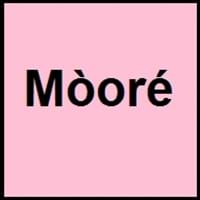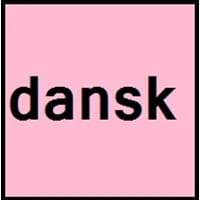Mossi and Danish
Countries
Burkina Faso
Denmark, European Union, Faroe Islands, Greenland, Nordic Council
National Language
Benin, Burkina Faso, Ghana, Ivory coast, Mali, Togo
Denmark, Faroe Islands, Germany, Greenland
Second Language
Not spoken in any of the countries
Not spoken in any of the countries
Speaking Continents
Asia
Europe, North America, South America
Minority Language
Not spoken in any of the countries
Argentina, Brazil, Canada, Germany, Greenland, Norway, Sweden, United States of America
Regulated By
Not Available
Dansk Sprognævn (Danish Language Committee)
Interesting Facts
- Mossi languages use pitch to distinguish meanings.
- Mossi is the 2nd largest ethnic group in Ivory Coast.
- Danish, Norwegian and Swedish are mutually intelligible, that means if u learn Danish is almost like learning three languages in one.
- There are 9 vowels in Danish language, which can be pronounced in 16 different ways.
Similar To
Dagbani Language
Norwegian and Swedish
Derived From
Not Available
Old Norse Language
Alphabets in
Mossi-Alphabets.jpg#200
Danish-Alphabets.jpg#200
Writing Direction
Not Available
Left-To-Right, Horizontal
Thank You
Laafi bala
Mange tak
How Are You?
Laafi beme ?
Hvordan har du det?
Good Night
Ne y yungo
God nat
Good Evening
ne y zabre
God aften
Good Afternoon
Kia ora
God eftermiddag
Good Morning
Ne y yibeogo
God morgen
Bye
Wend na kon-d nindaare
Farvel
I Love You
Kei te aroha au ki a koe
Jeg elsker dig
Excuse Me
Y gafare
Undskyld mig
Dialect 1
Ouapadoupou
Scanian
Where They Speak
Burkina Faso
Sweden
How Many People Speak
Not Available
Dialect 2
Saremde
Jutlandic
Where They Speak
Burkina Faso
Denmark
Dialect 3
Taolende
Bornholmsk
Where They Speak
Burkina Faso
Island of Bornholm
Speaking Population
Not Available
Alternative Names
Not Available
Dansk, Rigsdansk
German Name
Mossi-Sprache
Dänisch
Pronunciation
Not Available
[d̥ænˀsɡ̊]
Ethnicity
Mossi
Danish people or Danes
Origin
Not available
c. 1100 AD
Language Family
Niger-Congo Family
Indo-European Family
Subgroup
Western Sudanic
Not Available
Branch
Gur (Voltaic)
Not Available
Early Forms
No early forms
Old Danish, Early Modern Danish
Standard Forms
Mossi
Rigsdansk
Signed Forms
Not Available
Signed Danish
Scope
Individual
Individual
ISO 639 1
No data Available
da
ISO 639 6
Not Available
Not Available
Glottocode
moss1236
dani1284
Linguasphere
No data Available
5 2-AAA-bf & -ca to -cj
Language Type
Living
Living
Language Linguistic Typology
Not Available
Subject-Verb-Object
Language Morphological Typology
Not Available
Fusional
All Mossi and Danish Dialects
Most languages have dialects where each dialect differ from other dialect with respect to grammar and vocabulary. Here you will get to know all Mossi and Danish dialects. Various dialects of Mossi and Danish language differ in their pronunciations and words. Dialects of Mossi are spoken in different Mossi Speaking Countries whereas Danish Dialects are spoken in different Danish speaking countries. Also the number of people speaking Mossi vs Danish Dialects varies from few thousands to many millions. Some of the Mossi dialects include: Ouapadoupou, Saremde. Danish dialects include: Scanian , Jutlandic. Also learn about dialects in South American Languages and North American Languages.
Mossi and Danish Speaking population
Mossi and Danish speaking population is one of the factors based on which Mossi and Danish languages can be compared. The total count of Mossi and Danish Speaking population in percentage is also given. The percentage of people speaking Mossi language is 0.11 % whereas the percentage of people speaking Danish language is Not Available. When we compare the speaking population of any two languages we get to know which of two languages is more popular. Find more details about how many people speak Mossi and Danish on Mossi vs Danish where you will get native speakers, speaking population in percentage and native names.
Mossi and Danish Language Codes
Mossi and Danish language codes are used in those applications where using language names are tedious. Mossi and Danish Language Codes include all the international language codes, glottocodes and linguasphere.





